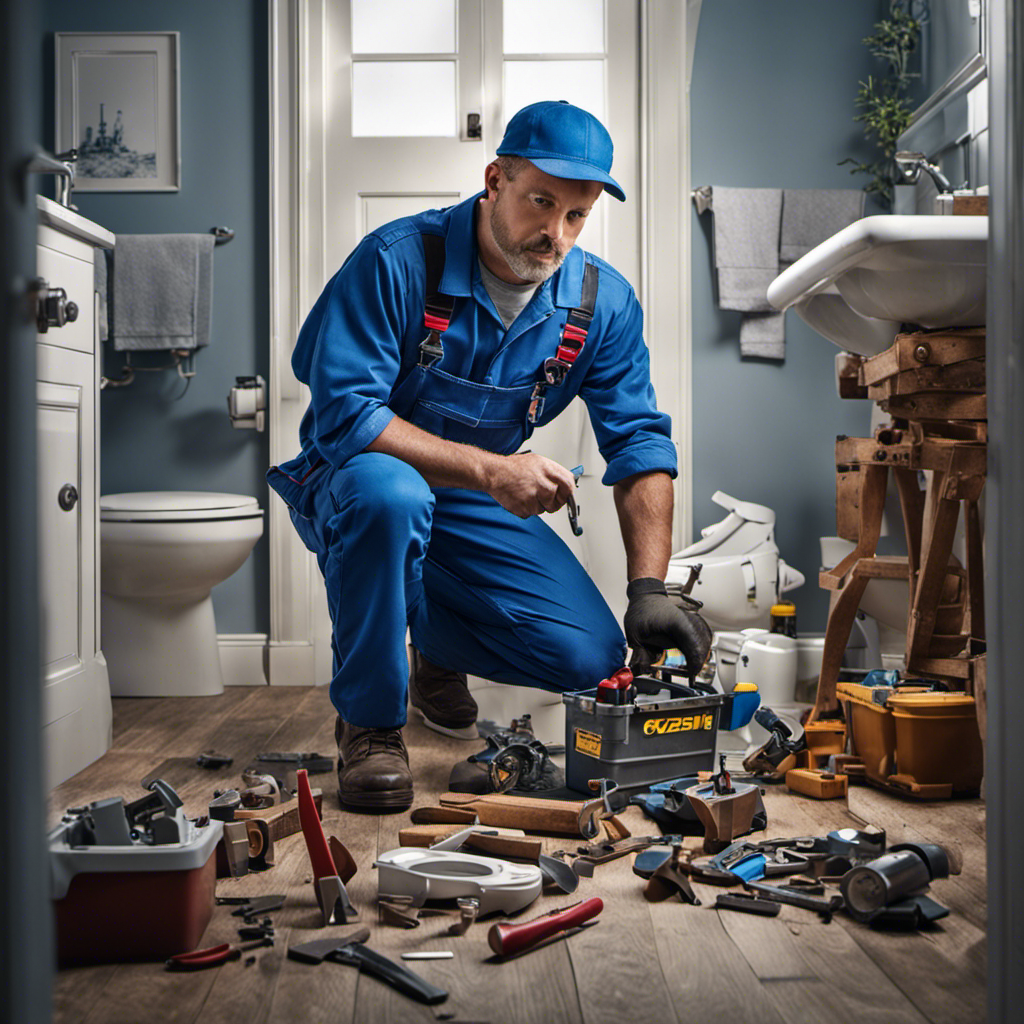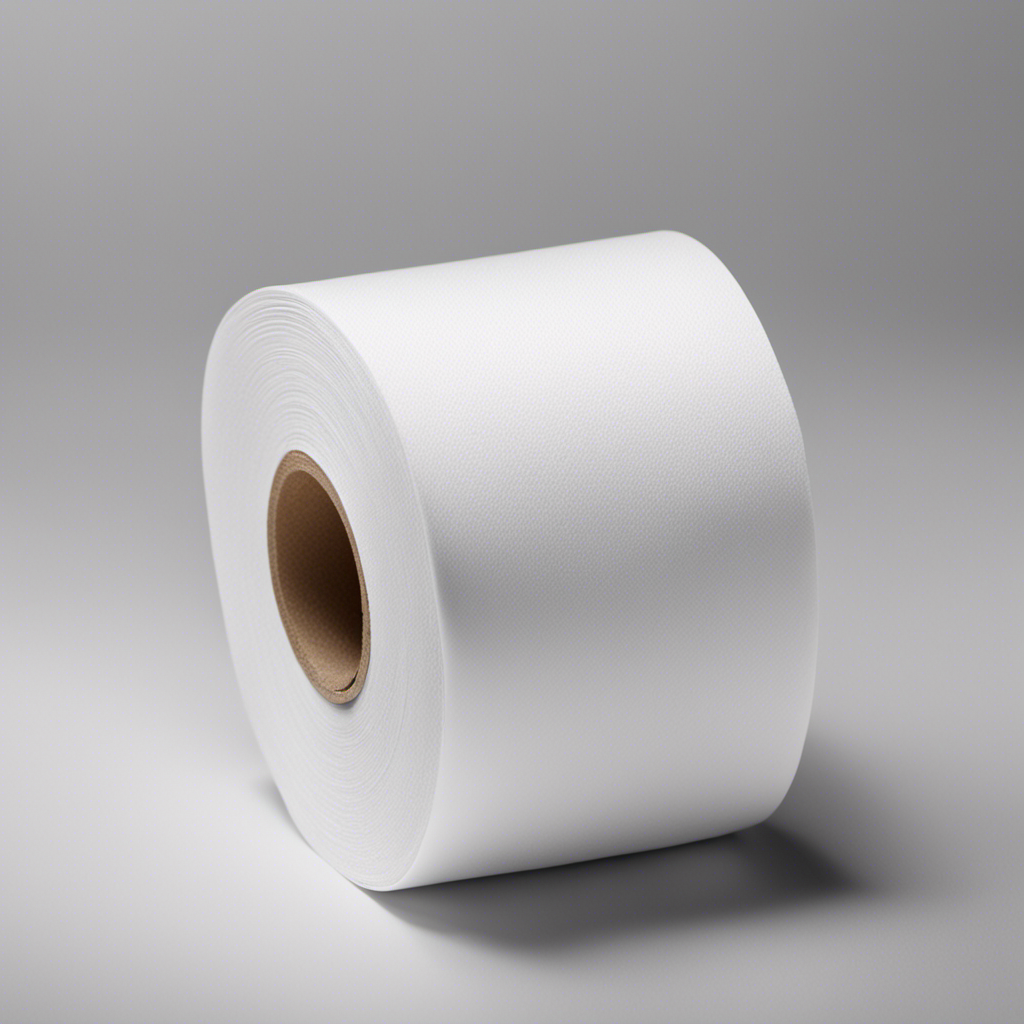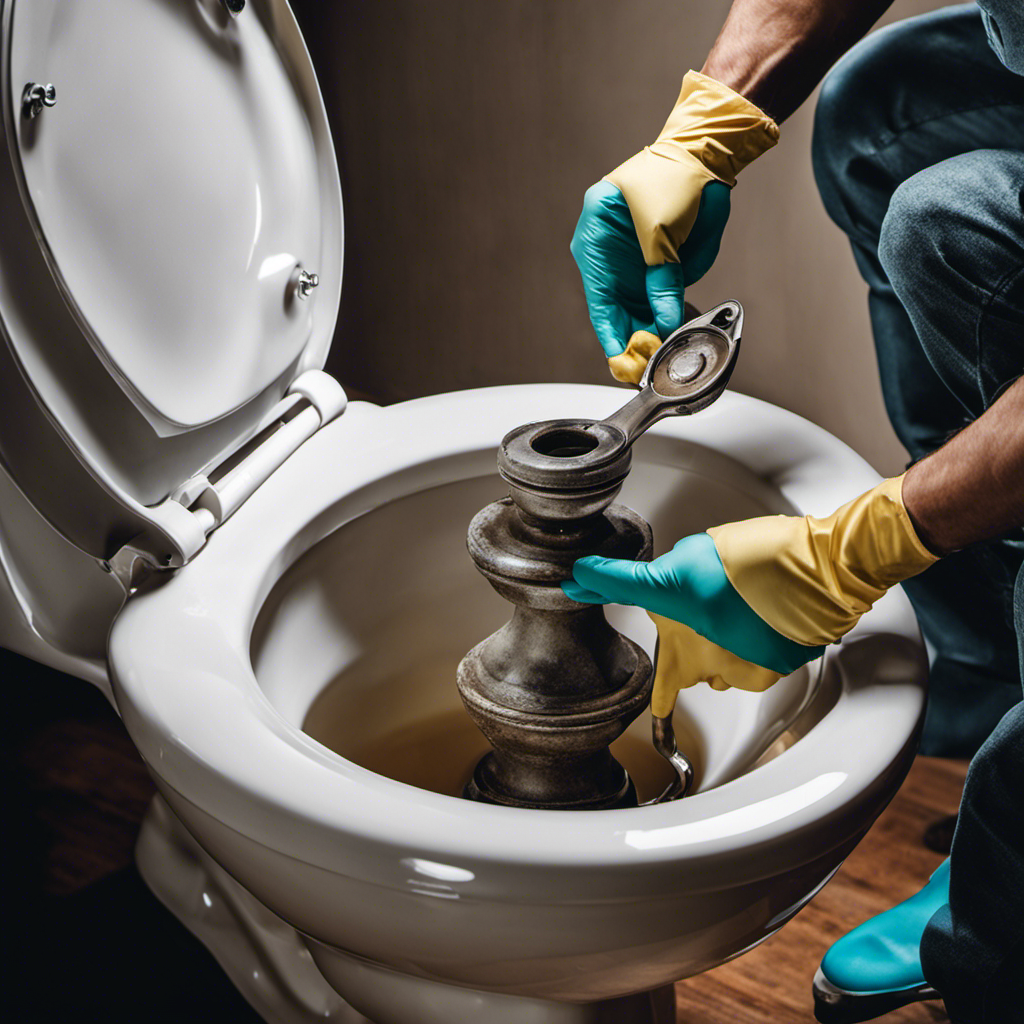As I stood in my bathroom, staring at my old, worn-out toilet, I couldn’t help but feel a sense of anticipation. It was time for a change, time to replace this outdated fixture with something fresh and modern.
But how long would it take? How much effort would it require?
In this article, I will guide you through the process of replacing a toilet, step by step, so you can embark on this journey with confidence and efficiency.
Let’s get started!
Key Takeaways
- Assess the situation and gather necessary tools and materials
- Properly disconnect and dispose of the old toilet
- Carefully install the new toilet, ensuring proper alignment and tight connections
- Test the toilet multiple times to check for proper function and make necessary adjustments
Assessing the Situation
Assessing the situation, I’ll need to determine if I have the necessary tools and materials to replace the toilet.
Evaluating my options, I can either hire a professional plumber or attempt the replacement myself.
Troubleshooting common issues, such as leaks or clogs, may help me decide the best course of action.
If I have the required tools, including a wrench, plunger, and putty knife, and the replacement toilet ready, I can proceed with confidence.
However, if I lack the necessary tools or encounter complications during troubleshooting, it may be wise to seek professional assistance.
It’s important to remember that replacing a toilet requires careful attention to detail, as it involves disconnecting water supply lines, removing the old toilet, and properly installing the new one.
Gathering the Necessary Tools and Materials
Once you’ve gathered all the necessary tools and materials, it’s easier to start replacing a toilet.
The first step is to choose the right toilet model that suits your needs and preferences. Consider factors such as water efficiency, comfort, and design. Take into account the dimensions of your bathroom and the available space.
Next, gather the tools you will need, including a wrench, pliers, a putty knife, and a sponge. Additionally, gather the materials needed for installation, such as a new wax ring, bolts, and a toilet seat if necessary. Having all these items ready will save you time and ensure a smooth installation process.
Removing the Old Toilet
When you’re ready to begin, start by turning off the water supply to the toilet. This is an important step in the toilet removal process as it prevents any water from flowing into the toilet while you’re working.
Once the water supply is turned off, you can proceed with removing the old toilet. First, remove any items that may be on top of the toilet tank and disconnect the water supply line.
Next, remove the nuts that hold the toilet to the floor. Once the nuts are removed, carefully lift the toilet off the floor and place it on a tarp or drop cloth to protect your flooring.
Installing the New Toilet
Before you begin, make sure you have all the necessary tools and materials for installing the new toilet. This will ensure a smooth and efficient installation process. Here are some toilet installation tips to help you get started:
| Tools | Materials |
|---|---|
| Adjustable wrench | Wax ring |
| Screwdriver | Toilet bolts and nuts |
| Level | Toilet tank connector |
| Plunger | Water supply line |
| Bucket | Toilet seat |
When installing a new toilet, there are some common mistakes to avoid:
- Not using a level to ensure the toilet is straight and level.
- Failing to properly tighten the bolts, which can cause leaks.
- Forgetting to place a wax ring between the toilet and the flange, leading to leaks.
- Over-tightening the nuts, which can crack the toilet.
- Not connecting the water supply line correctly, resulting in water leaks.
Testing and Finishing Touches
To test the newly installed toilet, flush it a few times to check for any leaks or issues with the water supply. This is an important step in the installation process to ensure that everything is working properly.
-
Testing Methods:
-
Flush the toilet multiple times to see if it fills and drains correctly.
-
Check for any leaks around the base of the toilet or at the water supply connection.
-
Final Adjustments:
-
If there are any leaks, tighten the connections or replace faulty parts.
-
Ensure that the toilet is securely fastened to the floor by tightening the mounting bolts.
By following these testing methods and making necessary final adjustments, you can ensure that your newly installed toilet is functioning properly.
This will provide peace of mind and prevent any future issues with the water supply or leaking.
Frequently Asked Questions
How Much Does It Cost to Replace a Toilet?
To replace a toilet, the cost of installation can vary depending on whether you choose to do it yourself or hire a professional. Factors like the type of toilet and any additional plumbing work needed can also affect the cost.
Can I Replace a Toilet Myself or Do I Need to Hire a Professional?
I can replace a toilet myself, but hiring a professional has benefits. DIY toilet replacement allows for cost savings and a sense of accomplishment. Hiring a professional ensures proper installation and peace of mind.
Are There Any Specific Building Codes or Regulations I Need to Follow When Replacing a Toilet?
When replacing a toilet, it’s important to follow building code regulations and toilet installation guidelines. These rules ensure safety and proper functionality. By adhering to these guidelines, you can confidently complete the installation.
How Do I Choose the Right Size and Style of Toilet for My Bathroom?
When choosing a toilet for your bathroom, consider the different types available in the market, such as one-piece or two-piece toilets. Measure the space in your bathroom to ensure the toilet fits properly.
Are There Any Eco-Friendly Options Available When Replacing a Toilet?
When replacing a toilet, there are eco-friendly options available that offer numerous benefits. These toilets use less water, reducing environmental impact and saving on water bills. They are a great choice for those looking to be more environmentally conscious.
Conclusion
In conclusion, replacing a toilet is a straightforward process that can be accomplished in just a few simple steps.
By assessing the situation, gathering the necessary tools and materials, removing the old toilet, and installing the new one, you can have a functional and efficient toilet in no time.
Don’t forget to test it and add those finishing touches for a job well done.
With a little time and effort, you’ll be able to enjoy a brand new toilet that will serve you for years to come.










